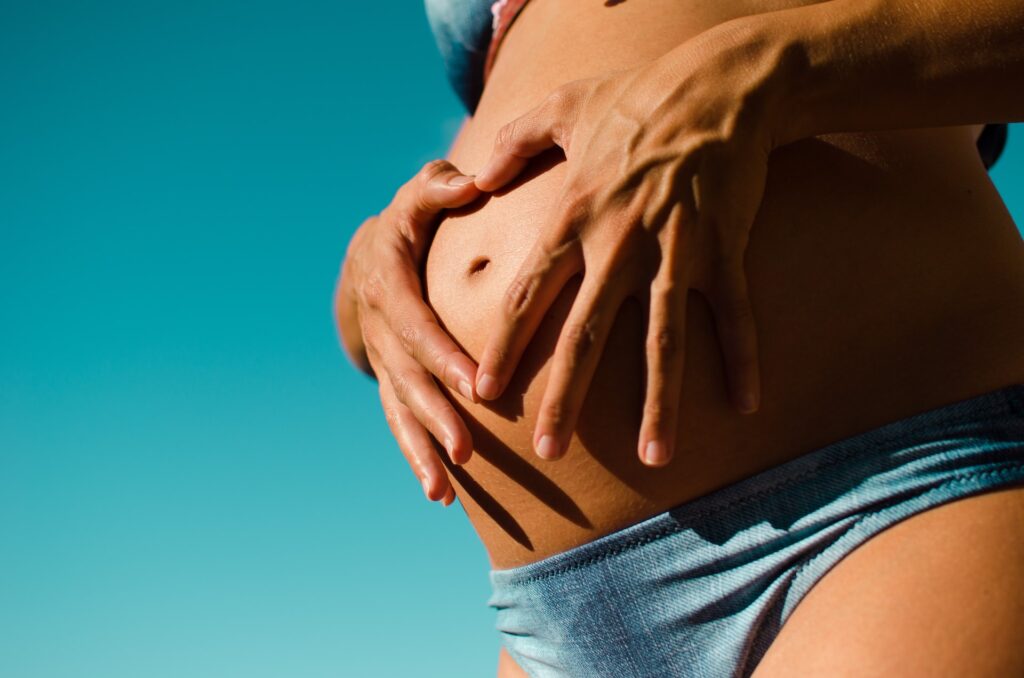Have you delivered recently and want to support your womb and fasten the recovery process? Try postpartum belly binding.
When a woman is pregnant, the muscles relax and stretch to accommodate the child during growth and development. During the period of delivery, the body releases relaxing hormones. The main aim of this hormone is to relax the pelvic ligaments during birth.
However, the process causes some mothers enlargement of the hips and ribs after the process. Practicing postpartum binding offers abdominal support, stabilizes the ligaments, and allows a lady to return to the original shape. The baby moves the hips and ribs outwards when delivering, and it’s hard to recover without applying physical means. As the relaxing hormone reduces, warping the belly helps restore the original shape.
Learn more about postpartum belly binding in this article.
How Does Postpartum Belly Binding Work?
There are many processes that the body undergoes when a woman is pregnant to the birth stage. After giving birth, the body needs time to heal to restore its initial status. Sometimes after a lady has delivered, discomfort and pain may prevail. As such, she must look for some postpartum practices that will aid her recovery. One of the ways to achieve this is through postpartum belly binding.
Postpartum belly binding is a method that has been used for several centuries and in cultures around the globe. When a woman is pregnant, the abdominal muscles constantly strain and undergo overstretching. When muscles overstretch, they separate and lead to a condition known as diastasis recti. Research shows that more than sixty percent of ladies experience these effects postpartum. Fortunately, the state disappears after eight weeks. But some mothers are not fortunate enough to self-heal the impact of postpartum. Some ladies may experience chronic pain during recovery and need to apply some methods to aid.
Postpartum belly binding gives ladies one less thing to think about. It supports them and enhances faster recovery after childbirth. It provides tremendous support during the early days of recovery.
What Are the Benefits of Postpartum Belly Binding?
You will experience the following benefits after or when using postpartum belly binding.
- It alleviates abnormal swelling
- It prevents slouching when holding the baby
- It stabilizes loose ligaments for flexibility
- It reduces fats, air, and water in the tissue and cells, therefore, hastening to heal
- It makes physical exercises easier
- It relieves chronic back pain
- It fastens the healing process
- It restores the uterus to the standard size, thus alleviating pain
- It improves the rate of blood flow to affected parts, thus initiating faster healing
Supporting Pelvic Floor Muscles
During poignancy, the organs make room for the child’s growth. The relaxing hormone produced during this process can relax the muscles, leading to urine leaks after delivery. Postpartum belly binding offers compression forces that help holds the pelvic floor muscles in place during the healing process. This allows your body to operate normally without the after-birth effects.
Diastasis Recti Recovery
During pregnancy, the main muscles found on either side of the stomach split due to the expansion to make room for the baby. The separation of these muscles is called diastasis recti. As the uterus expands during a child’s growth and development, the muscles are pushed far away from each other. These muscles must restore their original status two months after childbirth.
Postpartum belly binding supports the recovery of these muscles as they bind back together.
What Are the Risks of Postpartum Belly Binding?
Although this practice has numerous advantages, it does have some setbacks. The side effects of postpartum belly bind include severe pain, too much pressure on the muscles, itchiness, pelvic floor prolapse, and rashness.
These side effects occur from wearing belly wrap mead or irritating material or making it too tight. Postpartum belly binding is a practice that supports your body and enhances easy and faster recovery. Therefore, be careful when you use it, as tying it too tightly can bring setbacks.
Some people use waist trainers as postpartum belly binders. Some people, like waist trainers, may also use postpartum belly binders to lose weight. You must know that these two practices and the materials used to differ. Waist trainers are made of unique material that limits the swift movement of your belly muscles. Using it for reliving after-birth effects leads to the flowing setbacks:
- Organ damage
- Acid reflux
- Heartburn
- Varicose veins
- Difficulties in breathing
- Fainting
- Digestion complications
Types Of Belly Wraps
Many types of belly wraps are used for postpartum belly binding. The type of wrap you choose depends on what you prefer.
The most well-known belly-binding warps are traditional wraps. With these wraps, the user manually warps their hips and abdomen below the bust area.

Bengkung Belly Binding
This method originates from Malaysia, but various cultures and countries use it to support healing. It is the art of wrapping a woman’s body or supporting and increasing recovery from after-birth effects. Bengkung belly binding involves using a long cloth wrapped around the hips and ribs. A lady is wrapped using this method five days after delivery. They then must have it on for a minimum of forty days. The time limits depend on how the victim feels after the first forty days. It can be longer if the desired effects are not achieved after the allocated time.
The Bottom Line
Postpartum belly binding has numerous benefits to ladies after delivery. When used correctly, the healing and recovery process is hastened, and the lady returns to her original shape and health. As with most medical advice on the internet, it may be wise to consult a doctor before trying this out.
Do you have any tips to get rid of that pesky postpartum belly? If so, please leave them in the comments below.




Leave a Reply
You must be logged in to post a comment.